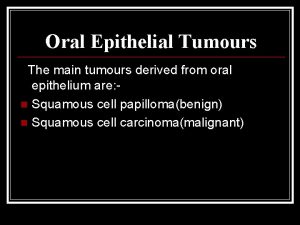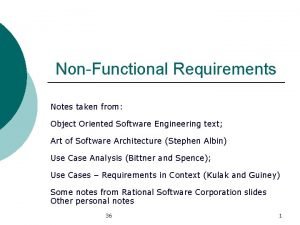Outcomes of Sporadic resected NonFunctional Pancreatic Neuroendocrine Tumours

- Slides: 1

Outcomes of Sporadic resected Non-Functional Pancreatic Neuroendocrine Tumours (NF-p. NETs) – 11 -years experience in a tertiary referral hospitals in Latvia. ID 23379 Margarita Ptašņuka 1, 2, Haralds Plaudis 1, 2, Artūrs Ozoliņš 2, 3, Māris Sperga 4, Artūrs Truškovs 2, Zenons Narbuts 2, 3, Iveta Kudaba 5, Aija Geriņa-Bērziņa 6 1 Riga East Clinical University Hospital, Department of General and Emergency Surgery; 2 Riga Stradins University; 3 Pauls Stradins Clinical University Hospital, Department of Surgery; 4 Pathology Center, Department of Infectious Pathology; 5 Oncology Centre of Latvia, Clinic of Chemotherapy and Haematology; 6 Pauls Stradins Clinical University Hospital, Clinic of Oncology Fig 2. Distribution of NF-p. NETs according to WHO 2010 classification 3. 5 3 2. 5 2 1. 5 1 0. 5 0 Introduction With risen incidence over the last decades, p. NETs represent a small part of pancreatic tumours with extremely heterogeneous biological behaviour. Moreover, management of NF-p. NETs are still controversial worldwide, especially the dilemma arise for tumours < 2 cm in diameter. Grade III Small NF-p. NET Materials and Methods We retrospectively analysed patients who underwent surgical resection of NF-p. NETs at Riga East Clinical University Hospital and Pauls Stradins Clinical University Hospital between 2006 and 2016 (Fig 1). For further analyses postoperative outcomes and recurrence rate were evaluated between asymptomatic patients group with small (< 2 cm) and large (≥ 2 cm) tumours. Large NF-p. NET* * In 4 patients correct grading was difficult to obtain Fig 3. Patients with uneventful postoperative period p =0. 391 Small NF-p. NET Large NF-p. NET Patients with histologically confirmed p. NETs through LV GEP-NET database n=50 0% Excluded: - Functional p. NETs (n=13) - Patients with Tu related symptoms (n=11) - Unresectable primary Tu (n=13) Screening Identified Fig 1. Flowchart of patients Surgically treated NF-p. NETs 20% 40% Included 100% 120% Long-term outcome The mean follow-up time was 46. 6 (± 35. 2 SD) months. Regarding the large NF-p. NETs group, 4 (44. 4%) patients showed disease recurrence after a mean of 28. 8 (± 23. 9 SD) months and 1 of these patient died 28 months after disease progression. Characteristics Small NFp. NET Large NFp. NET 4 (100%) 8 (88. 9%) - 1 (11. 1%) 4 (100%) 5 (55. 6%) - 4 (44. 4%) p-value Mortality rate Large asymptomatic NF-p. NETs n=9 Still alive Deaths Results Recurrence rate Baseline characteristics of the study patients are shown in Table 1. Without disease Table 1. Clinical characteristics Small NFp. NET Large NFp. NET pvalue Gender (female) 4 (100%) 7 (77. 8%) 0. 169 Age, mean (±SD) 64. 3 (± 3. 95) 46. 7 (± 15. 4) 0. 05 Characteristics 80% Table 2. Main outcomes n=13 Small asymptomatic NF-p. NETs n=4 60% Tumor localization, n (%) Head 2 (50%) 3 (33. 3%) Body 2 (50%) 2 (22. 2%) Tail - 4 (44. 4%) 0. 255 Progression 0. 529 0. 035 Conclusions Ø Due to the rarity of the disease and small group of patients our study is limited to draw valid conclusions. Ø However, in line to reported data in the field of p. NETs, our series of asymptomatic resected NFp. NETs proved better outcomes in small rather than large tumours. Ø Also, we could suggest critically appraise indications for aggressive pancreas surgical resection among patients with small NF-p. NET and high risk of operation.

